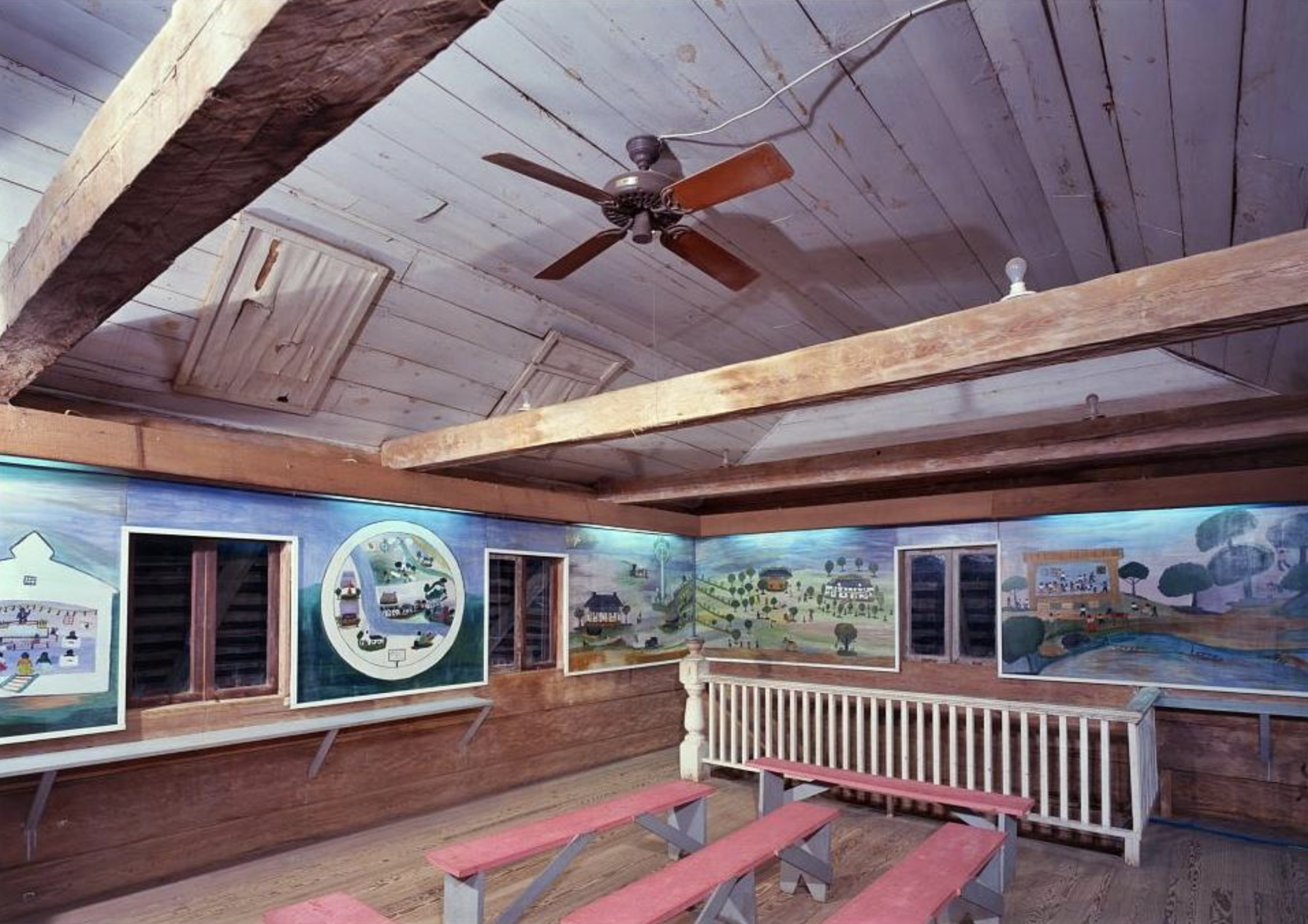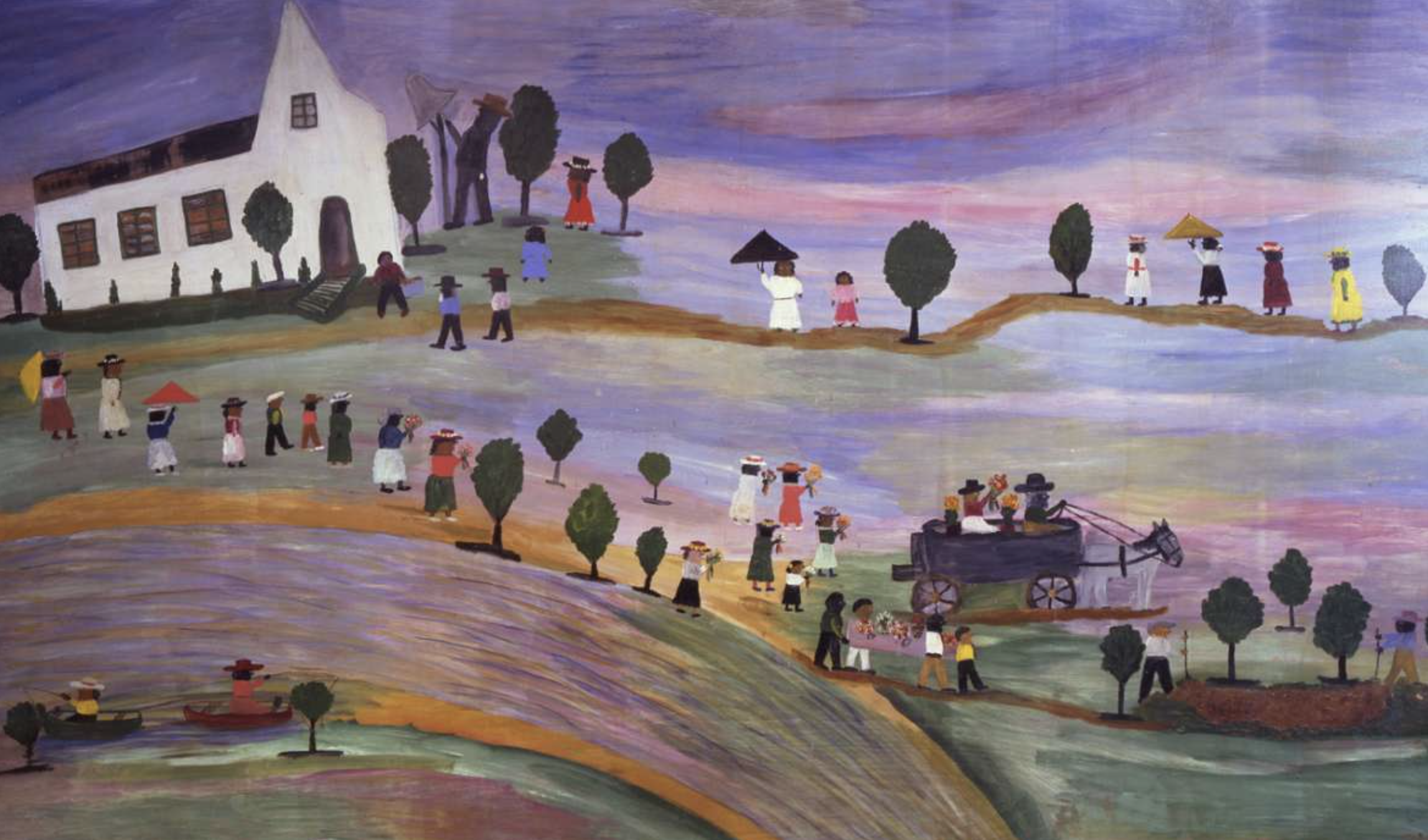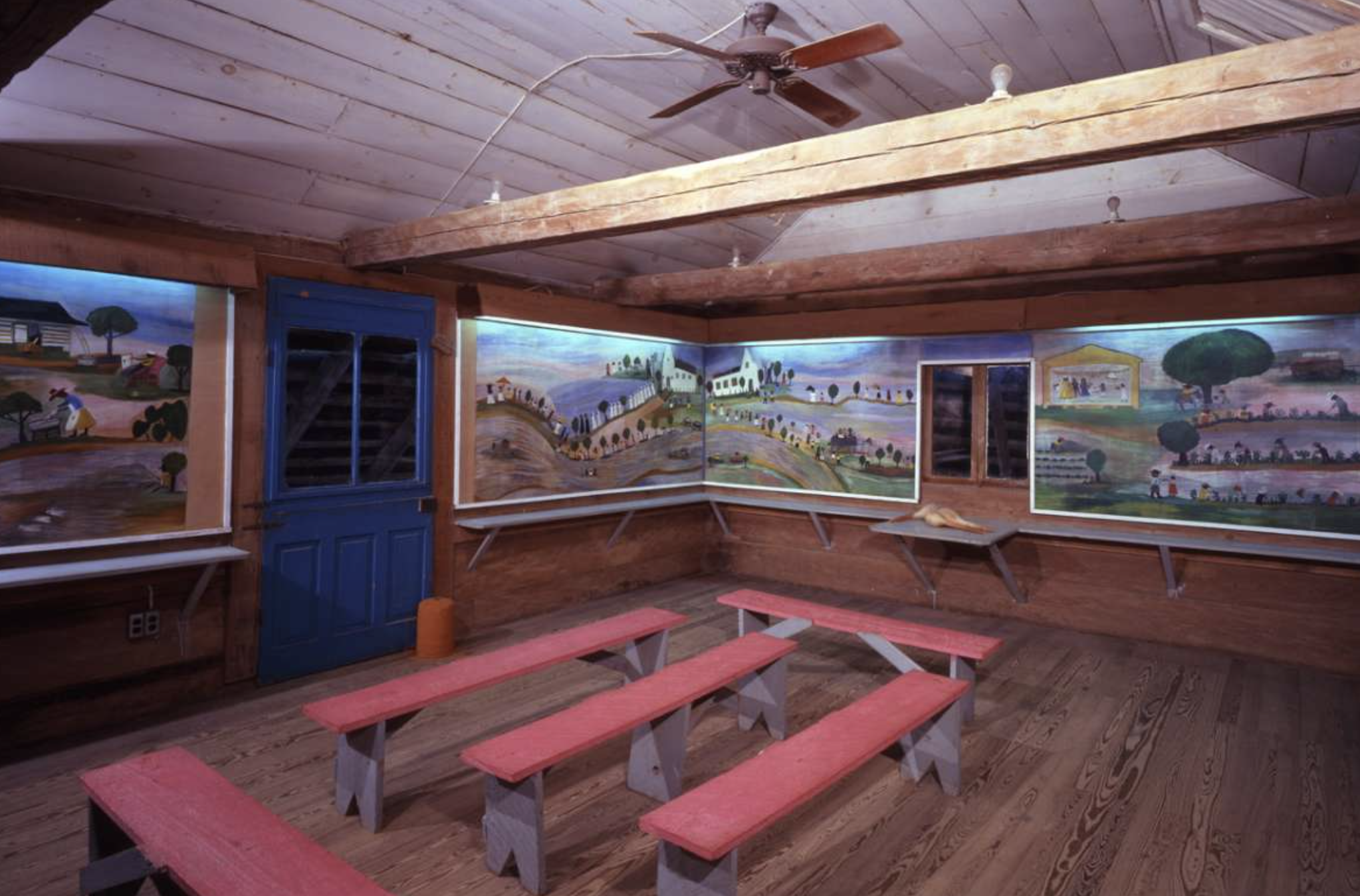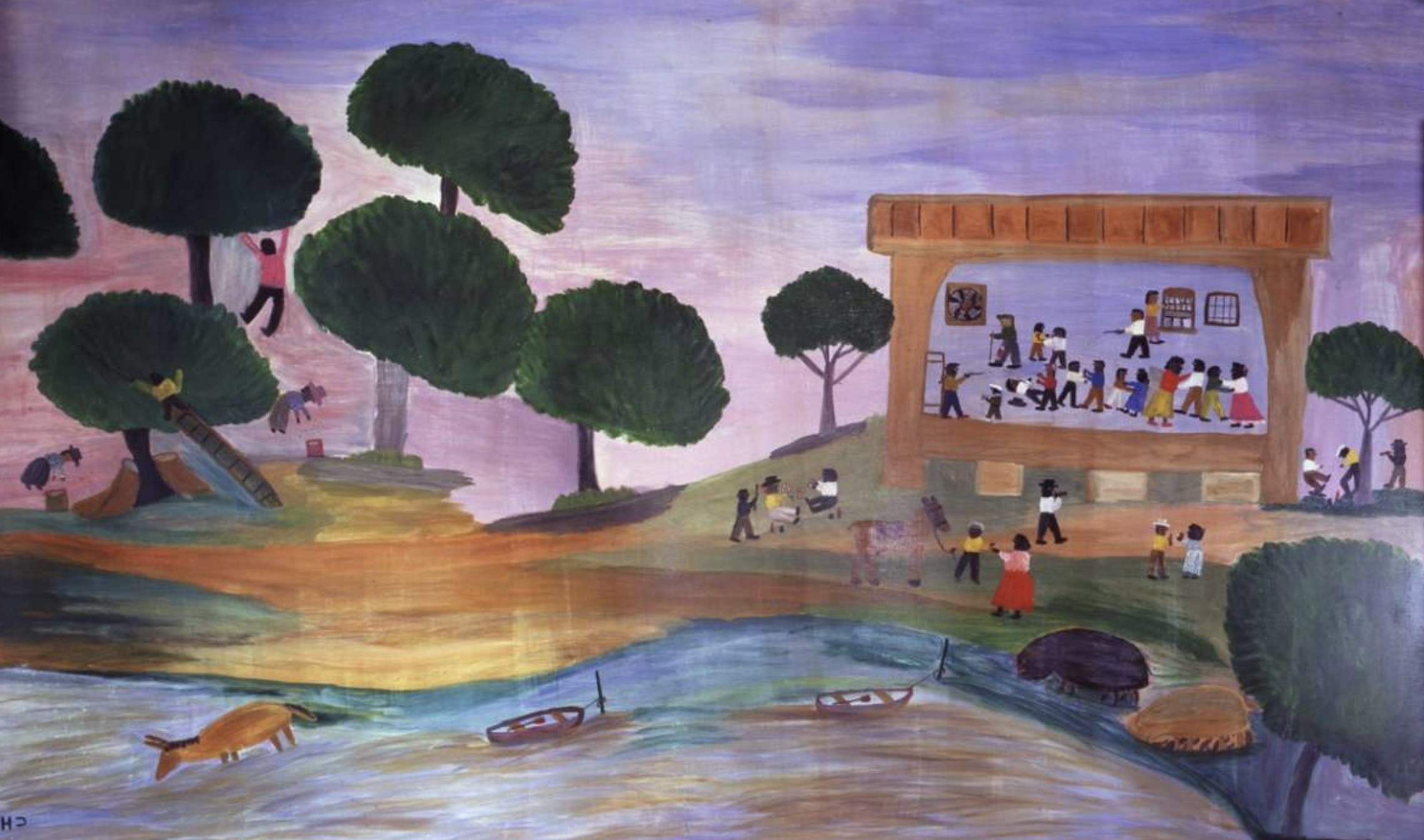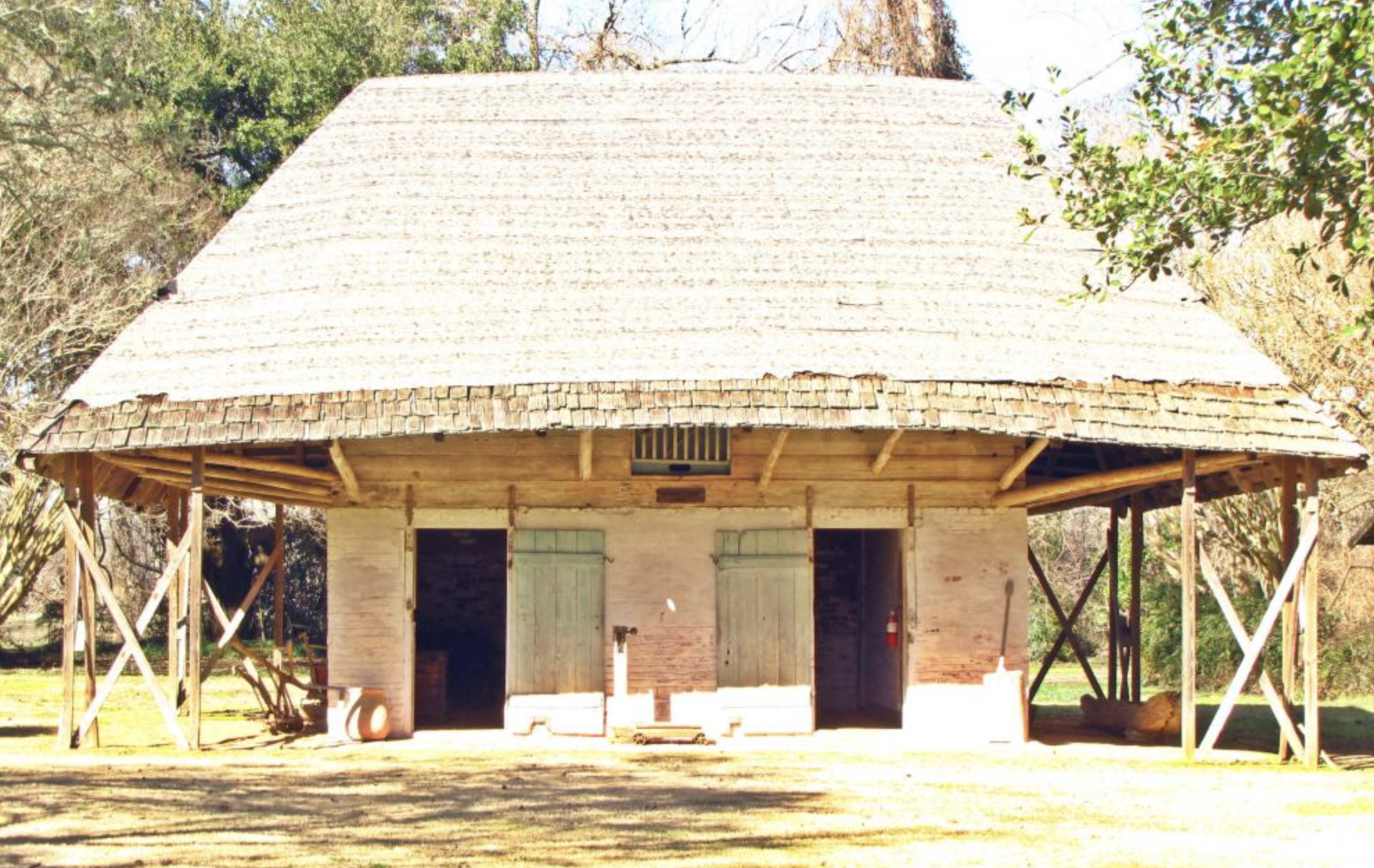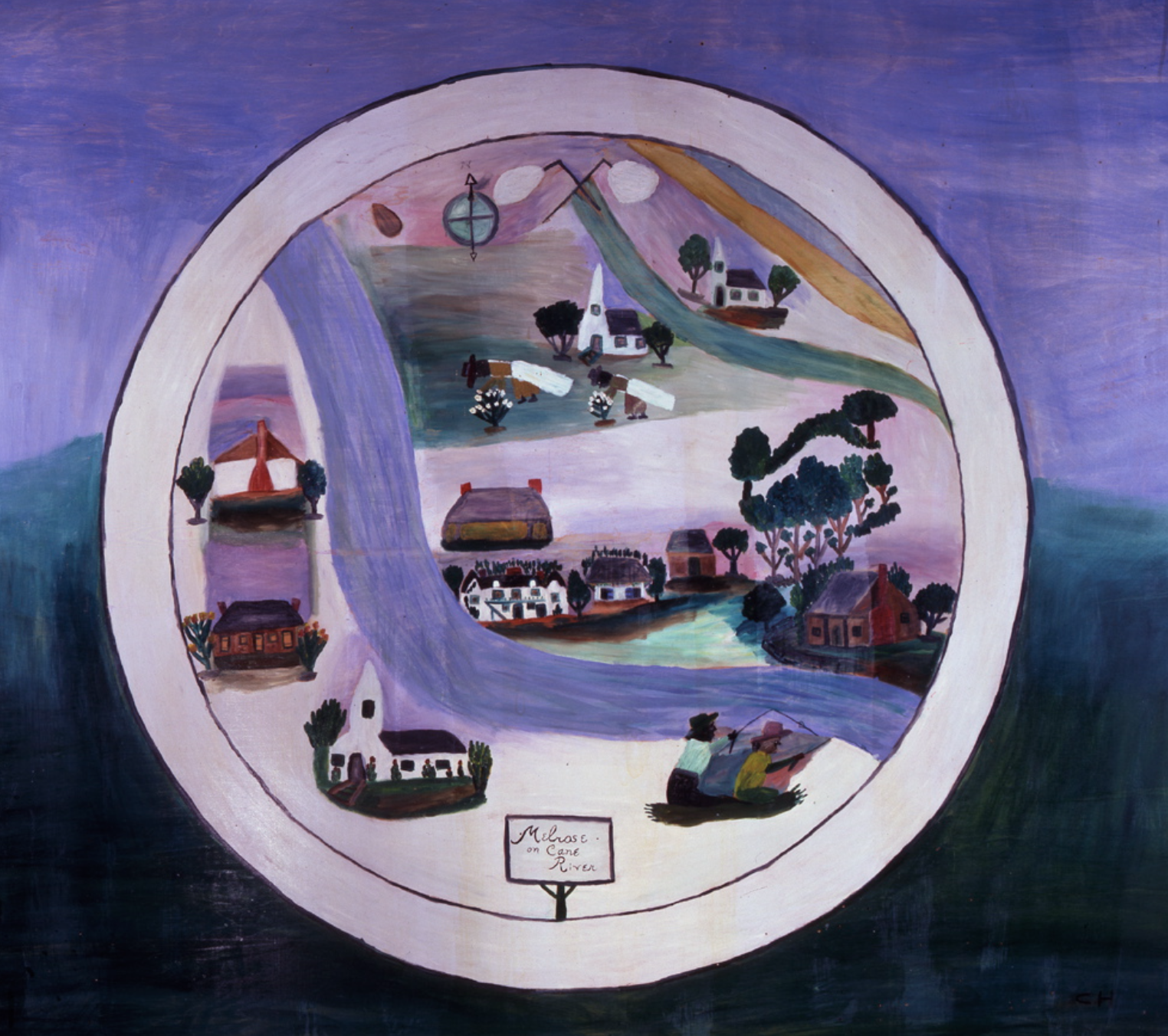Clementine Hunter
Color reproduction of a photograph of Clementine Hunter on Melrose Plantation, in Natchitoches, Louisiana, in the 1960s. Courtesy of State Library of Louisiana.
Harvesting Gourds Near the African House and Wash Day Near Ghana House,1959, Oil on board, 73 x 66 in. New Orleans Museum of Art, C. Heiderich Art Purchase Fund, 2018.
Clementine Hunter, born in 1886 in Louisiana, emerged as a self-taught artist who began her creative journey at the age of 50. Despite commencing her artistic endeavors later in life, Hunter's prolific output resulted in nearly 5,000 works of art. Today, she is one of Louisiana’s most renowned artists, celebrated for her creative talent and her unique perspective as a black woman. In a socio-political climate where opportunities for people of color were severely limited, often confined to servitude within white households with minimal financial compensation, Hunter's artistry serves as a poignant testament to resilience and creativity amidst adversity.
Uncle Tom in the Garden, 1950, Oil on Panel, 18 x 24 in. Courtesy of Gilley’s Gallery, Los Angeles, California.
Hunter was born on Hidden Hill Plantation, later known as the Little Eva Plantation, in Natchitoches Parish in Cane River County. She was born two decades after the conclusion of the American Civil War. Both of Hunter's grandparents had endured enslavement, underscoring the deep-rooted legacy of slavery within her Creole familial history. Hidden Hill Plantation, notorious for its harsh conditions for people of color, is said to have served as inspiration for the setting of "Uncle Tom’s Cabin” by Harriet Beecher Stowe.
At the age of 15, Hunter's father relocated their family to the neighboring Melrose Plantation in pursuit of a better quality of life and work opportunities. Hunter's formal education remained limited; she attended school for only ten days. Clementine opted to immerse herself in agricultural labor, spending her formative years engaged in cotton picking. As she matured, her responsibilities expanded to include domestic duties, such as cooking, cleaning, laundry, and childcare.
Zinnias in a Pot, 1965, Oil on board, 32 x 28 in. Courtesy of SCAD Museum of Art.
Clementine Hunter painting in front of the Yucca House, On the grounds of the Melrose Plantation
The owner of Melrose, Cammie Henry, began welcoming artists to stay at the property after the passing of her husband in 1918. It became a colony for many artists and writers, including Lyle Saxon, Roark Bradford, Alexander Woollcott, Rose Franken, Gwen Bristow, and Richard Avedon. It is said that New Orleans artist Alberta Kinsey left behind some paints and paintbrushes after her stay at Melrose in 1939. Hunter found these, received permission to use them, and thus began her artistic career.
Clementine is admired for her expressive mark-making and the varying surfaces she would paint on, such as cardboard, discarded buckets, bottles, and window shades. One of her most acclaimed works is the panoramic murals depicting plantation life she painted in a nine-room house on the Melrose property, known as the “African House,” which typically refers to slave living quarters; this particular building was used for food storage.
Untitled (Magi Bearing Gifts), 1970-1980, paint on an Albany slip whiskey jug, 9 1⁄4 × 7 5⁄8 in. Smithsonian American Art Museum, The Margaret Z. Robson Collection, Gift of John E. and Douglas O. Robson, 2016.
Melrose Quilt, ca. 1960, fabric, 73 x 60 in. Smithsonian American Art Museum, Museum purchase through the Barbara Coffey Quilt Endowment, 2014.
Depictions of women were a recurring theme in her artistry. Many of her paintings showcased black women engaged in various activities, from work and play to social gatherings, childcare, church visits, and funerals. Symbolically, she often represented angels as female figures, and in certain scenes, she subtly hinted at portraying baby Jesus as a girl. While employed in the main house on the plantation, Hunter also dedicated her time to sewing clothing for Ms. Cammie and her children, a practice that eventually inspired her intricate quilt creations. Clementine's life and art were deeply rooted in Louisiana; she never ventured beyond its borders, resulting in a massive body of work that intimately reflects the landscapes and culture of American plantation life in the South.
Clementine Hunter’s murals in the African House on Melrose Plantation.
Today, Clementine Hunter is revered as one of the most significant American folk artists, her legacy endures as a testament to her remarkable talent and unique perspective. During her time at Melrose Plantation, Hunter received invaluable support from fellow artists who recognized and nurtured her creative potential. Notably, François Mignon championed her work, facilitating its exposure to wider audiences. Hunter's paintings often adorned the walls of the local drugstore, where they sold for as little as twenty-five cents.
Baptism, c.1950, Oil on board, 15 ½ x 19 ½ in. Photo credit: John Wilson White Studio.
In 1953, with the help of Mignon as her advocate, Hunter and her paintings appeared in an article for Look magazine. The write-up included an illustrated image (photographed by Clarence John Laughlin) of Clementine in her cabin surrounded by her paintings. The article gave her national exposure, leading her to be the first Black woman to have a solo exhibition at the Delgado Museum (now the New Orleans Museum of Art) in 1956. Due to the segregation laws at the time, Clementine was prohibited from seeing the exhibition until after hours; François Mignon took her in the evening to see her paintings on the walls.
Drawing from her memories and experiences, Hunter captured vivid scenes of plantation life with remarkable authenticity. By the end of her life, Clementine’s paintings were being sold for hundreds of dollars; today they cost in the thousands. Hunter passed away at the age of 101 in 1988; she continued painting until just a few months before she passed. Her canvases teem with depictions of everyday activities, from cotton picking to baptisms and funerals, offering invaluable insights into the social and cultural fabric of the time. In this capacity, both Hunter and her artwork are celebrated as invaluable historical documents, preserving the rich tapestry of Southern heritage for generations to come.
Untitled, 1981; Oil and collage on canvas board, 14 x 18 in. National Museum of Women in the Arts, Gift of Evelyn M. Shambaugh; © Clementine Hunter
Researched and Written by Kat Miller
BIBLIOGRAPHY
“Clementine Hunter.” Gilleys Gallery. https://gilleysgallery.com/artist/672-clementine-hunter.
“Clementine Hunter.” The Johnson Collection. 2024. https://thejohnsoncollection.org/clementine-hunter/.
Hunter, Clementine, Tom Whitehead, and Art Shiver. "Portfolio: Clementine Hunter African House Murals." South Writ Large. https://southwritlarge.com/articles/portfolio-murals/.
Barice, Ashleigh. "Clementine Hunter: Dynamic Depictions of America's Rural South." Art UK. March 9, 2017. https://artuk.org/discover/stories/clementine-hunter-dynamic-depictions-of-americas-rural-south.
Allured, Janet. "Clementine Hunter." 64 Parishes. September 12, 2012. https://64parishes.org/entry/clementine-hunter.
"Clementine Hunter." The Melvin Holmes Collection of African American Art. https://www.holmesartgallery.com/artists#/clementinehunter.
"Clementine Hunter." National Museum of Women in the Arts. https://nmwa.org/art/artists/clementine-hunter/.
"Melrose Plantation: Clementine Hunter." Historic Artists' Homes & Studios. https://artistshomes.org/site/melrose-plantation#prettyPhoto.








